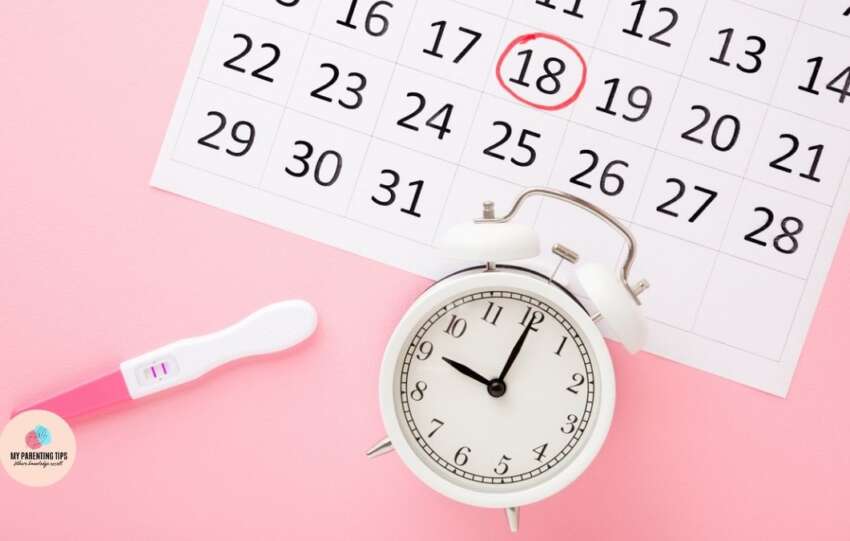Ovulation Calculator: Predict your Fertile Window

“The study emphasizes on knowing and applying an ovulation calculator to forecast fertile windows for conception. It addresses the menstrual cycle, calculator usage, ovulation symptoms, dealing irregular cycles, and determining the ideal time of conception.”
Many of us at some point in our life wish we better understand our bodies, particularly with regard to fertility. Our odds of conception will be much changed depending on when we are most fertile. One very useful tool on this road is an ovulation calculator. Predicting your fertile window helps you to decide on family planning and enhance your general reproductive condition.
Recognising the Ovulation Cycle
Let’s quickly review the menstrual cycle before we get into utilizing an ovulation calculator. Though in adults the average menstrual cycle lasts between 21 to 35 days, it usually lasts 28 days. Knowing this cycle is crucial since ovulation usually happens about midway.
Ovulation: what is it?
The procedure whereby an ovary releases an egg is known as ovulation. Usually, this occurs fourteen days before your next period starts. From its discharge, sperm can fertilize the egg for roughly 12 to 24 hours. Should fertilization fail, the egg will breakdown and the body will absorb it.
How does the Ovulation Calculator work?
Based on your cycle length and latest period date, an ovulation date calculator is meant to assist in figuring your viable window. There are many free ovulation calculators available online, which will help us to project the days most likely for conception.
How Can I Make Use of the Ovulation Calculator?
1. Enter Your Cycle Length
Most calculators will ask you to enter your average menstrual cycle length. Usually, this runs between 21 to 35 days.
2. Enter your last period’s date here
Tell us when your most recent menstrual cycle started. The calculator must know this to find your ovulation date.
3. Go over your results
The calculator will show you an anticipated ovulation date and the fertile window after you have entered your data. Usually spanning six days, five days before ovulation and the day of ovulation itself make up this window.
4. Track Your Cycle
Track your cycle over many months to raise accuracy. This will enable you to better project and spot trends.
An ovulation calculator helps us to take charge of our reproductive life. It’s a clear and efficient approach to improve our body awareness.
Symptoms of Ovulation
Apart from applying an ovulation calculator, we can search for bodily indicators of ovulation. These indicators can provide hints to support our confirmation of our fertile window:
1. Changing Cervical Mucus
Like raw egg whites, our cervical mucus may become transparent, slippery, and elastic around ovulation. This adaptation facilitates sperm’s more simple movement to the egg.
2. Increased Libido
Hormonal changes may cause some people to have more sexual desire around ovulation.
3. Ovulation Pain
This pain is known as mittelschmerz, some people get minor pain or cramps on one side of the abdomen during ovulation.
4. Breast Tenderness
Hormonal swings surrounding ovulation might cause breast pain.
5. Basal Body Temperature (BBT) Changes
This could rise somewhat because of higher progesterone levels. Monitoring BBT will enable one to verify ovulation has happened.
Knowing these indicators helps us tune in better to our bodies and validate the forecasts from our calculated ovulation.
Should my menstrual cycle be irregular, what should I do?
Many find that utilizing an ovulation calculator is difficult due to unpredictable menstrual cycles. If your cycles vary, give the following some thought:
1. Track Your Cycle
Note carefully your cycle durations and symptoms. This data can point up trends across time.
2. Consult a Healthcare Provider
If irregular cycles persist, we recommend seeing a healthcare provider. They can offer ideas and may be treatments.
3. Change of Lifestyle
Our menstrual periods can be influenced by stress, food, and exercise among other things. Retaining a balanced diet, controlling stress, and consistent exercise will assist control cycles.
4. Consider Hormonal Testing
Sometimes irregular cycles are caused in part by hormonal abnormalities. A doctor might advise testing to check hormone levels.
Although irregular periods can confound our knowledge of ovulation, tools like the online ovulation calculator can nevertheless provide direction.
When should one ideally start their pregnancy?
Our family planning will be much affected by knowing when to conceive. The five days before ovulation and the day of ovulation define the fertile window, the perfect period to conceive. Engaging in sexual intercourse during the five days or more that sperm can spend within the female reproductive tract enhances the likelihood of pregnancy.
To maximize your opportunity:
1. Plan beforehand
Forecast your fertile window using the ovulation calculator. Put these dates on your calendar so you’re ready.
2. Frequency of Intercourse
Aim for consistent, preferably every other day, intercourse during the fertile window. This guarantees sperm availability right during ovulation.
3. Healthy Lifestyle
Maintaining a good lifestyle helps to support general fertility by means of a balanced diet and frequent exercise.
Conclusion
Using an ovulation calculator will ultimately help us to better understand our reproductive window and increase our chances of pregnancy. Knowing our ovulation dates, spotting the symptoms of ovulation, and correcting any cycle anomalies will help us to proactively reach our family planning objectives. Recall that everyone is different; what suits one person could not be so for another. Staying informed and consulting medical experts when necessary is therefore absolutely vital. Knowledge helps us to empower ourselves so that we may confidently and clearly negotiate our own paths.
Information Sources:
- FDA. 2018a. Ovulation (urine test). Available at: www.fda.gov/medical-devices/home-use-tests/ovulation-urine-test
- Office on Women’s Health: https://www.womenshealth.gov/ovulation-calculator
Disclaimer:
This article is for information only, for any medical help contact your health provider



